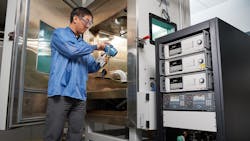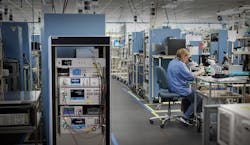6 ways instrument calibration can keep processes running smoothly
Manufacturing facilities have hundreds of incredibly precise devices to keep processes running reliably. To keep these devices working without stopping, and to specifications, they must be inspected, repaired and calibrated regularly. Electrical, timing, flow, temperature and pressure sensors require calibration. When they do, these instruments are usually sent out to a calibration lab, or a calibration engineer is brought into the plant to conduct the calibration tests.
Here are six ways automation and control engineers can help ensure successful instrument calibration and keep your plant up and running.
1. Preventive calibration maintenance
In the same way that you would check electrical assets during a preventive maintenance route, you should check your mechanical assets. They can produce results that make the component seem uncalibrated even of it just needs to be cleaned or have a tune up.
Start by checking the fans and filters; they often need to be cleaned monthly or quarterly, depending on the machine. Dirt and dust can stop an asset from performing within its designated specifications. So, for example, a part may be calibrated perfectly, but the fan is not cooling it enough, causing the whole machine not to run at peak performance.
2. Follow the calibration schedule
Calibrations are usually certified for a specified length of time, and after that date, the accuracy of your product can begin to decline. It’s important to follow the schedule the manufacturer or calibration lab sets up for each product.
If you’re sending equipment to a calibration lab, give them plenty of time by sending it early whenever you can. Calibration labs get busy and can get backed up. Shipping times can be unpredictable either for sending out or receiving the equipment back. The best way to ensure your product is calibrated and back online in time to stop plant delays is to send it early and give the lab plenty of time to complete the calibration.
Calibration schedules are usually based on:
- Type of instrument
- How the instrument is used
- How often the instrument is used
- Environment it is used in
- Level of accuracy needed
3. Provide details about your equipment
When you send out your asset for calibration or bring a calibration engineer into your plant, be sure to provide specific information about the equipment. Let the lab or engineer know why you are calibrating it; for example, if you have seen a decline in accuracy or something is not working correctly. Describe where you’ve seen the decline and how long the issue has been present. Providing the context can help inform what tests are done to ensure the product’s accuracy.
It can also be helpful to include information on how the test engineers use the equipment. Not every application fits what’s expected and sharing pertinent information with the calibration lab or calibration engineer can help ensure better service and optimal performance for how you use your products.
4. Know the product’s measurement uncertainties
Calibration does not guarantee that every measurement is perfect. A calibration lab or mobile calibration engineer follows specifications on what tests to put each product through in order to calibrate it. That means the asset is tested per the manufacturer’s specifications and not at every single test point possible.
If you use a product to the extreme of its measurement uncertainty, the basic manufacturer-suggested calibration may not be enough for you. Ask the lab for specific, additional calibration points based on how you use the product. That way you will have high confidence that the calibration is accurate for your needs.
5. Check for damage during shipping
If you packed up and shipped your product out for its calibration, check it when you get it back. It is important to make sure everything is working accurately before you begin using it in your production line again. Run a few sanity checks to make sure it was not damaged in transit from the calibration lab back to you. Calibration precision and accuracy can sometimes be negatively impacted if a product gets dropped or treated roughly. If you do notice an issue or the device does not seem properly calibrated, speak with the lab and figure out what is needed to fix the problem.
6. Perform MSA before and after calibration
Measurement system analysis (MSA) is a great way to find out if you need to calibrate your device, or if it was not calibrated properly when you get it back from a calibration lab. It is ideal to use this analysis before and after a calibration is done so you have before and after data points to compare.
MSA is a mathematical method of determining the variation within a measurement process. It is used to certify the measurements and controls being used by evaluating accuracy, precision and stability. In an emergency, test engineers can use MSA to figure out what is going on before sending a device out to a calibration lab. Knowing how to perform MSA gives engineers better control of equipment, and leads to better results down the line.

